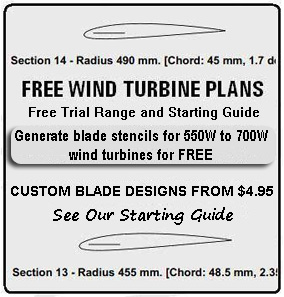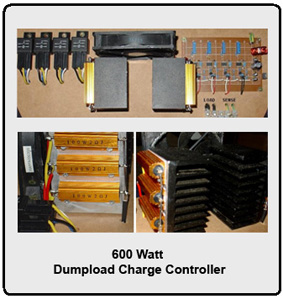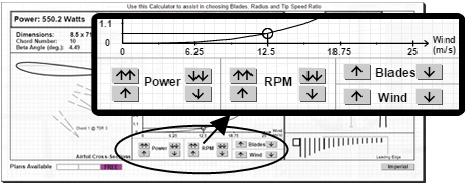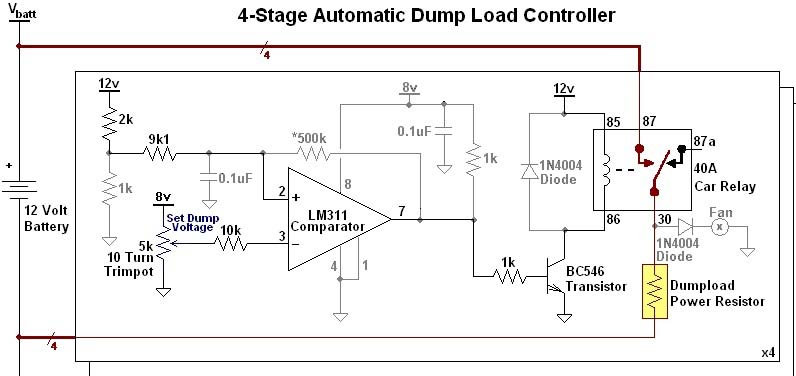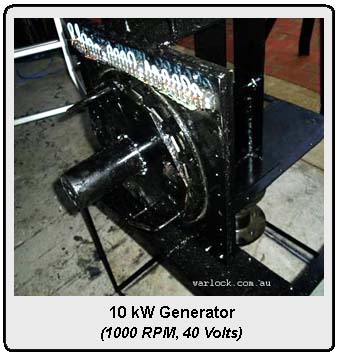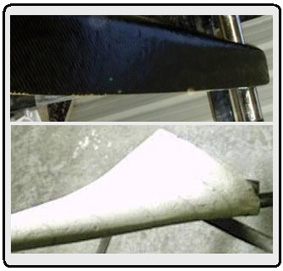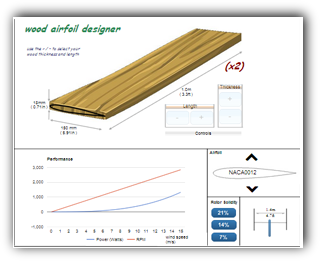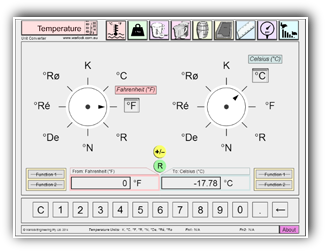



Enable Ads for www.warlock.com.au



Frequently asked questions about plan orders, blade design, electrical work and generator matching can be found on our Q&A pages.
Wind turbine technology has an identified limit for the efficiency in which kinetic energy can be converted into electricity, described mathematically as the 'Betz Limit' of ~59%. During the historical development from slow moving 'windmills' to modern wind turbines, more rigorous knowledge about aerodynamics was under development and allowed the late designs to incorporate airfoil sections, providing 'lift' force on the blade. The practical application for wind power generation was not obvious until the impact of fission and fossil fuel based technologies had become relevant.
Turbine performance is calculated by comparing the power output from the operating generator, to the 'theoretical' power calculated using our 'Blade Calculator' software. The value for theoretical power given by our software is the maximum power possible for all of the design dimensions. Blade efficiency is assumed to be 30% (0.30) for three accurately built blades.
Software for designing wind turbines specifications including size, speed and blade number, remains a focus of our research.
Our wind turbine calculations were established and validated in the original 'Blade Calculator' for Windows 95 by using the experimental measurements, obtained during the controlled testing of completed turbine builds.
The software has had continued development, adding additional features with conversion between metric and imperial systems.
Our wind turbine calculations were established and validated in the original 'Blade Calculator' for Windows 95 by using the experimental measurements, obtained during the controlled testing of completed turbine builds.
The software has had continued development, adding additional features with conversion between metric and imperial systems.
Power output from the turbines electrical generator will change depending on the rotational speed.
Large commercial turbines operate at a constant speed and power fed into the electrical grid is 'synchronous' with the AC phase that travels in the transmission cables. This is not the case with small domestic wind turbines and the excess power needs to be managed.
Large commercial turbines operate at a constant speed and power fed into the electrical grid is 'synchronous' with the AC phase that travels in the transmission cables. This is not the case with small domestic wind turbines and the excess power needs to be managed.

Modifying the blades shape and twist will change the ratio between the tip speed of the blade and incoming wind speed (TSR, tip speed ratio) with a lesser number of blades able to spin at a higher TSR.

The design of the generator determines the voltage and power produced, both of which increase with rotational speed in revolutions per minute (RPM). The generators specified RPM needs to closely match the turbines RPM at operating wind speeds to produce the power and voltage rated on the generators plate.
The power that can be converted into electricity from wind energy is proportional to the circular 'swept' area that the blades cover as they rotate. An increase in turbine power requires a greater swept area to be covered, therefore the square of the blade radius is proportional to area and also power produced. The average windspeed is adjusted to suit the location and can be useful to approximate the increases in blade radius required for low wind speed.

Online Blade Calculator Software

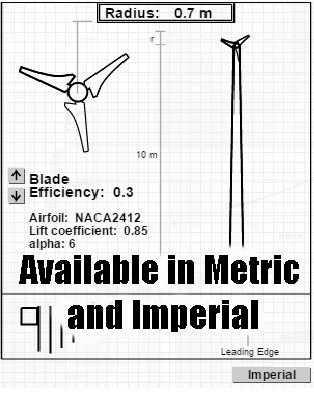
Generate
Wind
Turbine
Plans
for
Metric or
Imperial units.
Wind
Turbine
Plans
for
Metric or
Imperial units.



Background summary of selected projects
Our main focus is wind energy technology. Research projects are documented and presented on this site.
Developing new processes to generate power (converting mechanical or thermal energy into electricity) has eventuated in more sophisticated solar (photovoltaic cells) and emission capture technologies. The desire for 'non-destructive' energy conversion processes, such as utilising the decay from fission or capturing incident radiation from space, has long term social economic benefits and involves personal recognition of waste management from electricity production and use. The waste generated throughout the entire process of energy production is a concern for older and less effective technologies that are at the limit of their design efficiency. The waste generated during research can be difficult to predict.
At a constant electrical resistance in your circuit, (generator windings and transmission lines), the power output produced from the wind turbine is generated with a wide range of voltage and current over the operating speeds of the turbine.
SPONSORED ADVERTISEMENT
Wind Energy Technology:
Wind Energy Software:
Improvements to the design and construction technique are considered after blade efficiency is calculated using the data obtained during performance measurements.
Adjusting the TSR in the appropriate range can more suitably match the blades to the generator. Two bladed turbines operate in a TSR range between 8 and 10, with 3 bladed turbines spinning at a TSR between 6 to 7.
Electrical Circuit Design:
Our original 'Bladecalc' software, written in visual basic 6 (VB6), remains hosted on this site and is available for download. Progressive improvements are incorporated into newer versions of the online 'Blade Calculator'. Accessibility options and other functions are added for cross-discipline users. We aim to eventually assist in all design aspects including hub and generator specifications.
When the blade tip speed is at the correct TSR, airfoil lift is generated to boost efficiency in the power conversion process. Any rapid increases of voltage (and current) due to gusts wind are regulated using dumpload electronic circuitry, automatically adjusting the resistance in parallel to protect the system from overvoltage. Any excess energy is expended in the resistor as heat. This produces electricity suitable for domestic use.
The 'lift' and 'drag' profiles for a large number of airfoil shapes have been experimentally measured and literature values are used in our calculations for power. Our software for the design of home built wind turbines has been developed and tested throughout the course each turbine project, validating the known airfoil data and providing measured efficiency values depending on the chord accuracy and smoothness.









Enable Ads for www.warlock.com.au

Wind Turbine Blades, Generators and Dump Load Controllers

SPONSORED ADVERTISEMENT
There are some advantages to using plastic composites to produce blades and moulds, with some improvements in accuracy for blades that taper and twist. The increased strength and rigidity of materials maintain blade shape at high velocity and throughout the weathering process. Materials needed for construction are reduced as well as the blade weight.
The measured power curve for your generators RPM should closely match the effective blade power at the optimal TSR. During testing, we adjust the TSR at each wind speed by changing the load resistance to measure the blade power vs TSR.
Rectifying circuits divert current to flow into the battery after a certain RPM and voltage have been reached. Below this speed, the turbine spins freely (until the generator voltage exceeds the battery voltage). This circuitry diverts the current away from the battery input and into the dumpload to protect the battery and other circuitry (inverter and other appliances) from overvoltage.
Details of the microwave reactor design are given along with the 2.45 GHz RF simulation used to assess the expected leakage from the reaction chamber.

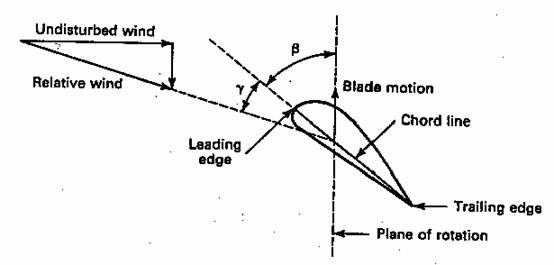
Wooden blades without twist or taper are fast to manufacture without a large investment in prior planning. Custom taper and twist vs length are possible to construct using wood, although the closeness to the ideal accuracy in the final product can be difficult to assess. Changes in blade shape, caused by deformation of the wood grain during further moisture losses are made worse by exposure to heat and weather. Inconsistent wood grain properties make hub attachment a larger concern than is immediately apparent, as the wood is smaller at this point and holds both the blade weight and force during operation. Turbines with a large number of blades or high TSR can be too thin to manufacture from wood, requiring additional coating in fibreglass composites.
Although fibreglass composites have superior strength, the cost effectiveness of wood carved blades currently can't be matched, along with the ease of access to wood resources. Appropriate wood types can be used to build wind turbine blades if the correct grain and drying process has been followed, as this provides some confidence that the finished product will be robust.
An economical fabrication process is a major design consideration for turbine blade construction. The construction is based on the available materials as well as your own experience. Plastic composites are prepared by the even packing or layered addition of fibre glass (or other fibres) and saturating it in an amount of the initiated polymer resin.
After initiating polymer growth, the plasticising resin begins to harden into a mechanically robust solid composed of both plastic and structural fibres. For small experiments, wood is still considered as a favourable option since waste is easily managed.
The mechanical properties of both the plastic and fibres contribute to the overall blade strength, each having an optimal percentage contribution for best results.
Fibreglass is a composite material made using a chemical resin in combination with solid fibres, providing superior strength from only a thin layer. Construction methods using composite materials allow the blade weight to be significantly reduced leading to faster start-up and safer operation. The mixture of resin and fibres are shaped and gradually undergo a 'curing' process to form a plastic polymer with fibres distributed throughout the plastic as a mesh.
Fibreglass Blades:
After gaining access to efficient turbine blades, the selection of a generator follows. Alternately, after gaining some experience, the technique for turbine blade manufacture is chosen depending on the availability of suitable generators that function in weathering conditions, have known power output and rated operating velocity (RPM, speed in revolutions per minute).
Matching Blades and Generators:
The power available for production using your customised turbine specifications will give a unique profile for power output with increasing wind speed in each individual case.
The construction accuracy of airfoil dimensions (including angle and position along the blade) is only limited by experience and technique. Plastic composite materials are more amendable to address these deficiencies. In case of errors, blade accuracy can be corrected during many stages of construction.
In areas where the wind is intermittent, a small amount of power can be used to start up the generator to reach the operating TSR over a shorter time period than normally taken using the force of wind alone. This allows power to be converted as quickly as possible after the wind has reached the speed required to operate the turbine for power generation.
Electronic means of adjusting or stopping the wind turbine operation in high wind speed include a circuit system for braking. This is needed if the generator begins to produce overvoltage. Mechanical methods to avoid operation during high wind involve mechanical furling systems.
The generator 'voltage per RPM' will determine the load that can be used to draw current from the entire generating system. A low resistance load will temporarily draw high current at the moment that the load is applied. A rapid reduction in voltage occurs until the generators RPM is moving current that will convert the same power from the blades, but at a new RPM. If this new generator RPM causes the blades TSR to fall below the optimal range for producing 'lift', efficiency is greatly reduced. In this case, the generator speed is insufficient to produce power, causing the turbine to 'stall'. If a load resistor is present in the generating circuit during 'start-up' the turbine will fail to start, even in high wind speed. The blades have not yet reached the optimum TSR and high efficiency needed to maintain power production.
Heating by Microwave Energy:
Microwave heating has common household and industrial uses, although its practical application is both facilitated and limited by the interaction with materials at a molecular or atomic scale. The use of microwave radiation to supply thermal energy for chemical reactions has been studied, along with reactor vessel design. Measurements for the interaction between microwave radiation and organic functional groups have been conducted at wavelengths other than the standard commercial 2.45 GHz operating frequency. Dielectric loss measurements are used to compare materials.
Organic chemicals containing 'non-metal' atoms are joined by atomic bonds. Vibrations in all directions in space occur if the molecule encounters thermal energy (heat). When the chemical structure contains differences in electron density or 'polarity', the absorption of microwave energy can occur. Microwave absorption of organic reagents and solvents are graphed over a range of radio frequencies (RF).
Wind Turbine Blade Manufacture:
Blade manufacture involves making a choice of materials (wood, plastic or composites), this determines your appropriate working techniques.
The weight of the final blade set should be considered. The effect of blade weight and radius contribute towards a combination of stresses on the generator and hub. Increases in fatigue are caused by vibrations of a heavier mass and a longer time is needed for a heavy object to reach high velocity due to the forces of the wind. Failures associated with heavier mechanical devices are also more difficult to manage.
Blade strength (across the radius span) is predictably more consistent when a single piece of material is used for the entire blade length.
Designs that have a wide chord length (closer to the root section) contribute a large surface area, making the construction process more expensive, but can provide a greater blade efficiency. The surface area (aspect ratio) contributed by all blades relates directly to the maximum power that can be captured.
Designs that have a wide chord length (closer to the root section) contribute a large surface area, making the construction process more expensive, but can provide a greater blade efficiency. The surface area (aspect ratio) contributed by all blades relates directly to the maximum power that can be captured.
